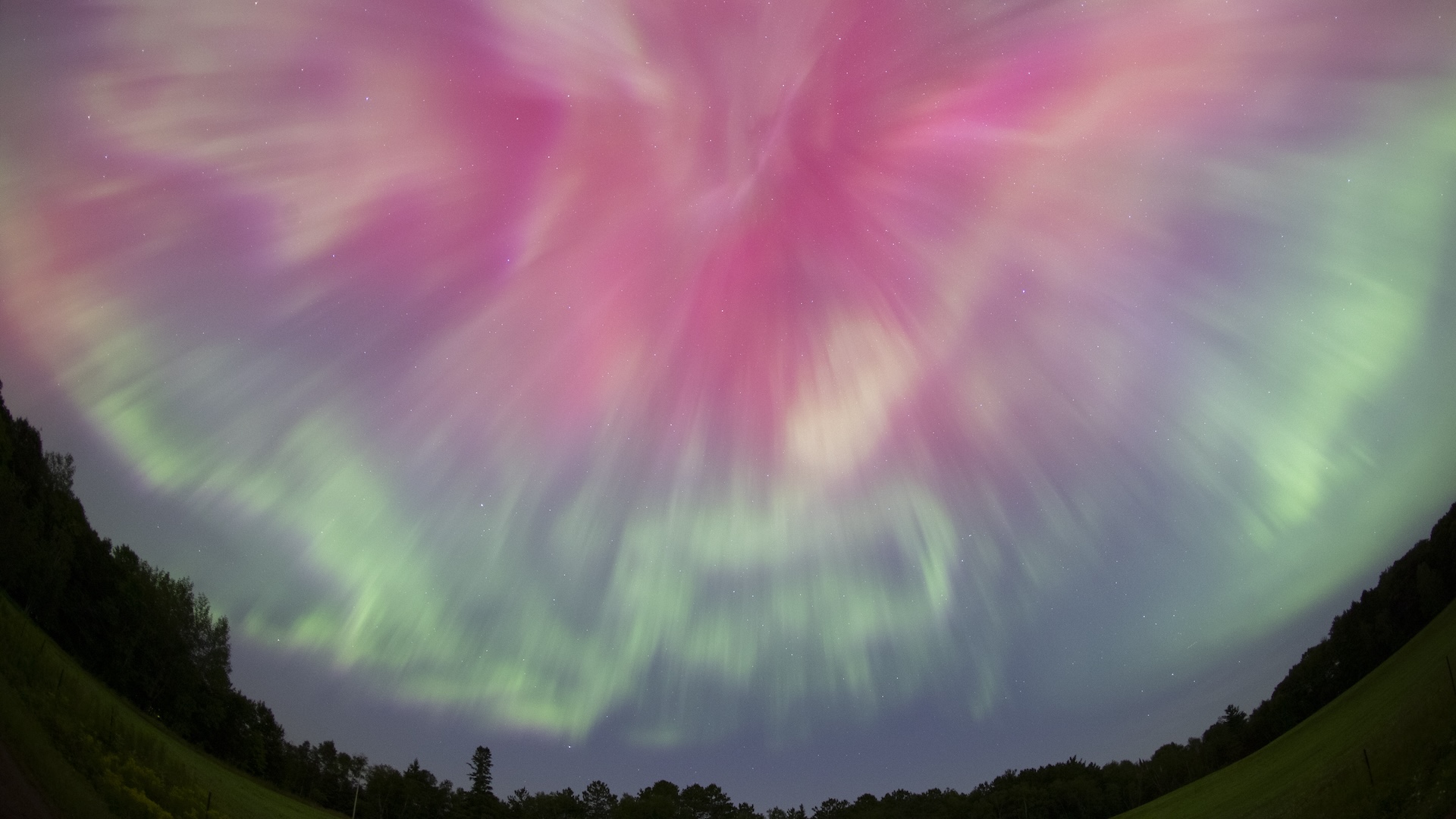
An enormous mass of charged particles that erupted from the sun on Tuesday (Oct. 8) has slammed into Earth, triggering a "severe" G4-class geomagnetic storm.
The storm is expected to crackle through our planet's atmosphere from Thursday into Friday (Oct. 10 to 11), causing possible power grid disruptions and generating bright auroras at much lower latitudes than usual, according to an alert from the National Oceanic and Atmospheric Administration's (NOAA) Space Weather Prediction Center (SWPC).
According to SWPC, the northern lights "may become visible over much of the northern half of the country, and maybe as far south as Alabama to northern California" on Thursday night.
The storm may also "impact ongoing recovery efforts for Hurricanes Helene and Milton" by putting extra stress on power grids weakened by the hurricanes and interfering with communications systems that depend on low-Earth orbit satellites, SWPC warned. Agency representatives have already contacted federal and state officials involved in the hurricane recovery about these possibilites.
As the geomagnetic storm develops, there is a chance it could escalate into "extreme" G5-class conditions, SWPC added, putting the storm on par with the exceptional solar outburst that hit Earth in May, which resulted in visible auroras as far south as Florida. SWPC will continue to update the public via their website as the storm progresses.
"Will this be a global phenomenon or seen across the United States, such as the May storm?" Shawn Dahl, service coordinator for the SWPC, said at a press conference on Wednesday (Oct. 9). "It's tough to say until we get a good read on it. We would really need to reach those G5 levels for that to happen again, and we do have a chance for that."
The solar outburst, known as a coronal mass ejection (CME), is the result of a powerful solar flare that erupted from our star on the evening of Oct. 8, according to NOAA. The flare has been categorized as an X 1.8-class solar flare, which is the strongest type of flare the sun can emit.
Solar flares occur when tangled magnetic-field lines on the sun violently snap back into place. Some flares may be accompanied by CMEs — fast-moving blobs of plasma that can take several days to reach Earth, if our planet happens to be within the firing line. Upon hitting our planet, CMEs can cause major disturbances in Earth's magnetic field known as geomagnetic storms, resulting in technological malfunctions and widespread auroras. NOAA measures geomagnetic storms on a scale of 1 to 5, with G1 storms considered "mild" and G5 storms dubbed "extreme."
Related: 32 stunning photos of auroras seen from space
There is little that individuals can do to mitigate the effects of the geomagnetic storm. But aurora chasers are advised to get as far away from city lights as possible for the best chance at seeing the northern lights. You don't need any special gear to see auroras, but viewing them through a phone camera can allow the colors to pop even more than they appear to the naked eye.
Solar flares, CMEs and auroras become more common during solar maximum, the peak of the sun's roughly 11-year activity cycle. The current cycle's solar maximum was initially predicted to begin in 2025, but some scientists suggest it may be happening right now. Researchers won't know for sure until the maximum has ended and solar activity begins to decline again.
Besides Earth, another object was also in the firing line of the incoming CME: the bright comet C/2023 A3 (Tsuchinshan-ATLAS), which is currently making its closest approach to the sun in 80,000 years. There's a chance the comet's tail was blown off or bent by the solar eruption, according to spaceweather.com, as was the case when a CME hit the horned "devil comet" 12P/Pons-Brooks earlier this year. Skywatchers won't know if comet C/2023's tail survived until it emerges from the sun's glare later this weekend.
Editor's note: This article was updated on Oct. 10 with new information from NOAA







